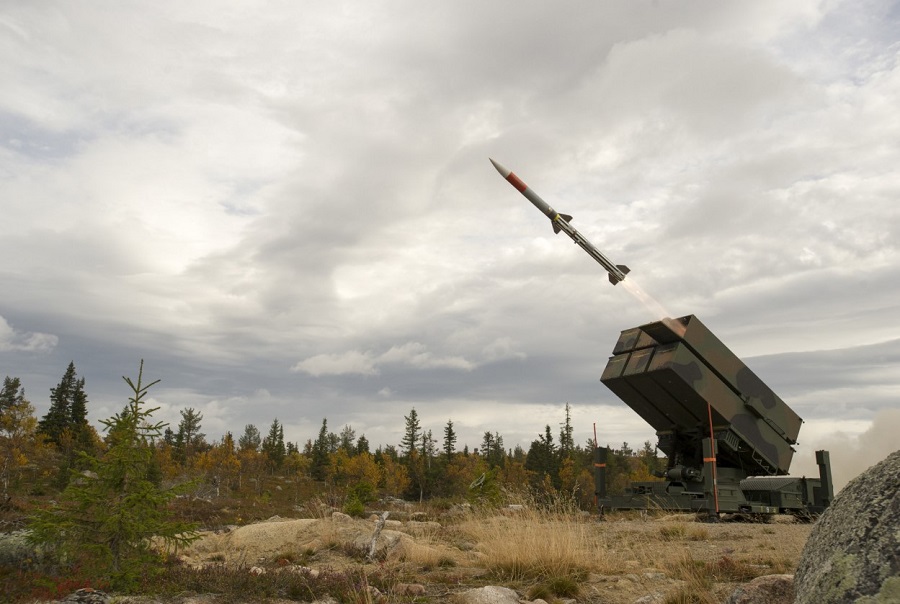The United States has deployed the 26th Marine Expeditionary Unit to the Persian Gulf region in response to Iran’s threats to shipping, the Pentagon announced.
The announcement on Thursday came after the U.S. said earlier this week that it was sending more warplanes to the region to deter Iran from harassing and attacking commercial ships in the strategic waters.
“In response to recent attempts by Iran to threaten the free flow of commerce in the Strait of Hormuz and its surrounding waters, the Secretary of Defense has ordered the deployment of a portion of the BATAAN Amphibious Readiness Group/Marine Expeditionary Unit comprised of the USS Bataan, USS Carter Hall,” and associated personnel to CENTCOM’s area of responsibility, the Defense Department said in a statement. The region covers the larger Middle East area, including the Red Sea and parts of the Indian Ocean.
According to a report on the Iran International website operated from London by the opposition to the Iranian regime, the USS Bataan group, which includes almost 4,000 sailors and Marines, had departed from Virginia and North Carolina.
“The 26th Marine Expeditionary Unit is based in North Carolina and includes the command element; the aviation combat element, Marine Medium Tiltrotor Squadron, 162 (Reinforced); the ground combat element, Battalion Landing Team 1/6; and the logistics combat element,” USNI said.
The Pentagon said on July 17 that it was sending additional F-35 and F-16 fighter jets, along with a warship to the Middle East, in a bid to monitor key waterways in the region following Iran’s seizure and harassment of commercial shipping vessels in recent months.
“The (Pentagon) is increasing our presence and ability to monitor the (Strait of Hormuz) and surrounding waters,” Pentagon spokeswoman Sabrina Singh told reporters. It was not clear where exactly the additional jets would be placed and how long they would stay in the region.
Announcing the deployment of the expeditionary force, the Defense Department also said in its Thursday Statement, “Through these actions, the United States is demonstrating commitment to ensuring freedom of navigation and deterring Iranian destabilization activities in the region.”
According to the website, Iran’s latest attempts to interfere with commercial shipping occurred earlier this month when it tried to seize two vessels. The U.S. Navy announced on July 5 that it prevented Iranian naval forces from diverting the vessels, including the Richmond Voyager, a super tanker managed by Chevron, in the Strait of Hormuz, the narrowest part of the Persian Gulf.
Since 2019, there have been a series of attacks on shipping in strategic Persian Gulf waters at times of tension between the United States and Iran. The Revolutionary Guard has seized or attacked 15 vessels since 2019, according to the U.S. Navy. Over the years, Iranian speedboats also harassed U.S. Navy ships, sometimes in dangerous maneuvers.
With the 2015 Iran nuclear deal effectively dead, Iran’s relations with the West have deteriorated over the last year, with Tehran supplying hundreds of kamikaze drones to Russia that have been regularly used to attack civilian and infrastructure targets in Ukraine. The U.S. and its allies have warned Tehran to seize its military cooperation with Moscow that can expand into supplying ballistic missile later this year when a UN restriction on Iran expires.
“We will continue to work with like-minded allies and partners who are committed to the free flow of commerce to take appropriate, coordinated actions against threats to this fundamental principle of the rules-based international order,” the Defense Department said.




















![NATO to consider increasing, stabilising support for Ukraine [BRIEF]](https://defence-industry.eu/wp-content/uploads/2023/12/Diehl-Defence-EUR-600-million-order-for-IRIS-T-SLM-air-defence-system.jpg)



